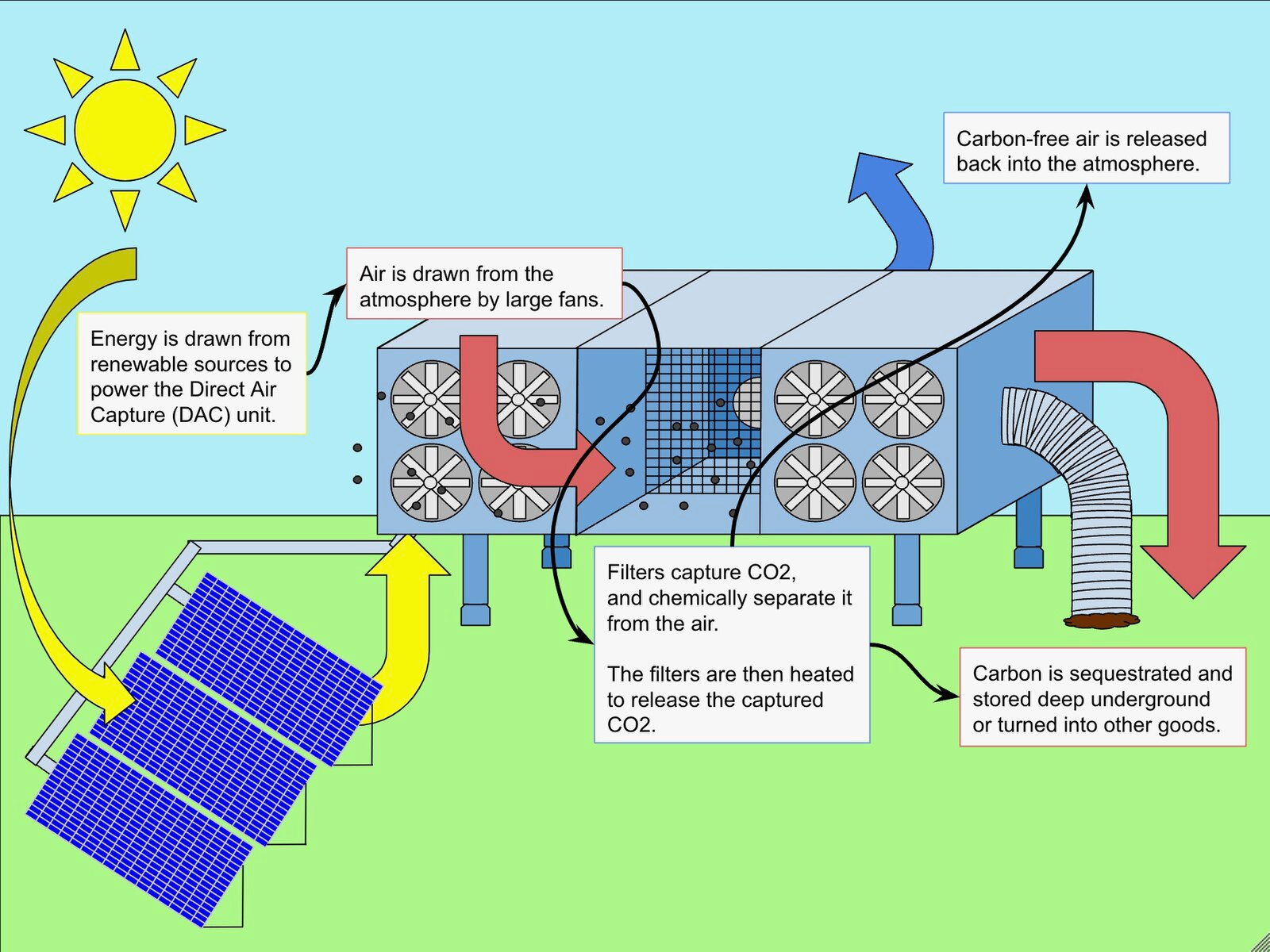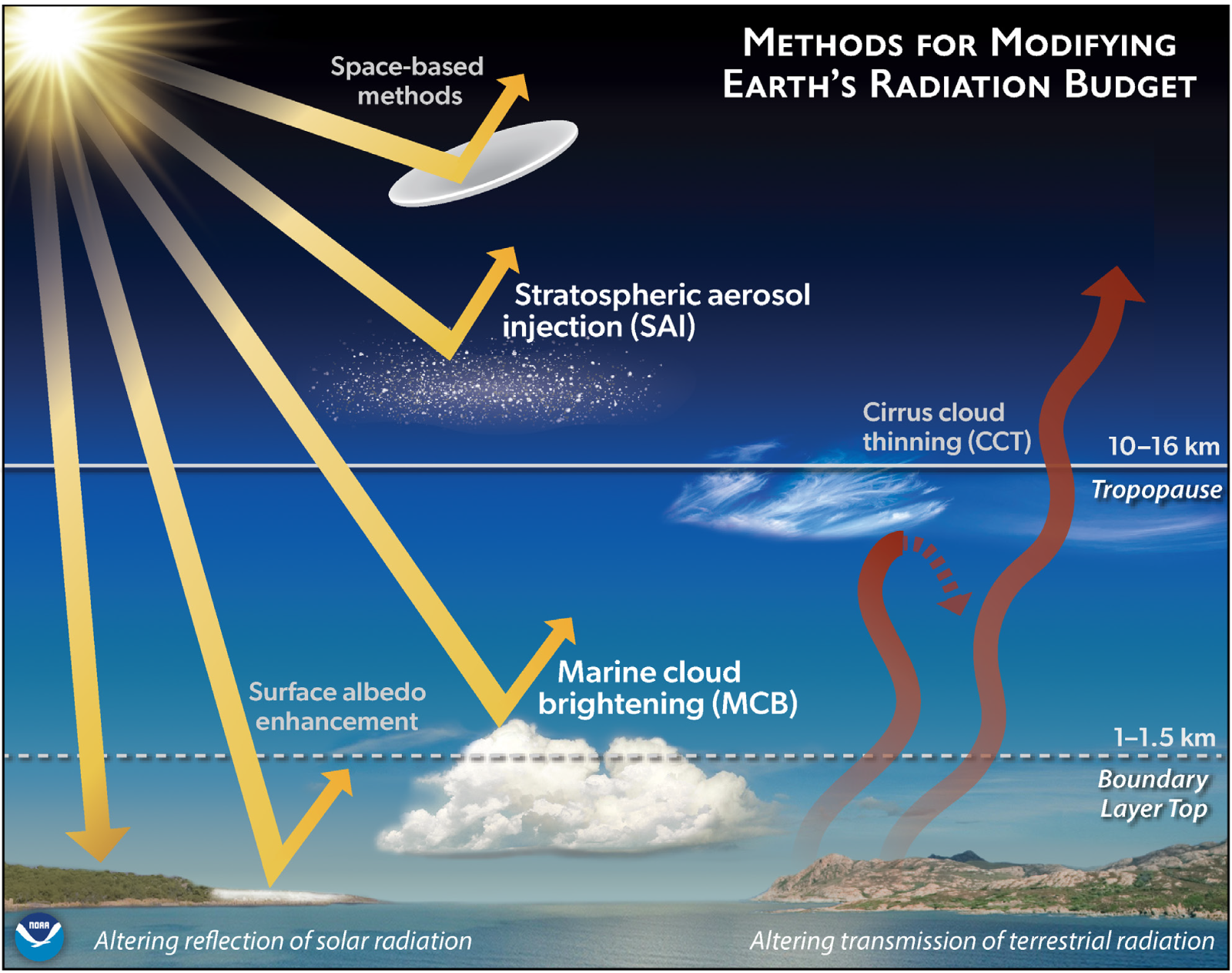IB Syllabus focus:
‘Geoengineering treats symptoms with uncertain risks and governance challenges. The atmosphere as a commons demands unprecedented cooperation to avoid free-riding and distribute costs fairly.’
Geoengineering proposes large-scale interventions in Earth’s systems to counteract climate change. While offering potential short-term relief, it raises profound risks, ethical dilemmas, and governance challenges requiring collective international cooperation.
What is Geoengineering?
Geoengineering refers to deliberate, large-scale manipulation of Earth’s climate systems to reduce the impacts of climate change. These strategies aim to treat the symptoms of global warming rather than its root causes. Because of their experimental and often untested nature, geoengineering measures carry uncertain environmental, social, and political consequences.
Geoengineering: The deliberate large-scale intervention in Earth’s climate system to counteract climate change.
Geoengineering is divided into two broad approaches:
Carbon dioxide removal (CDR): Techniques that attempt to directly reduce atmospheric CO₂ concentrations.
Solar radiation management (SRM): Techniques that aim to reflect a portion of solar radiation back into space, cooling the planet.
Carbon Dioxide Removal (CDR)
CDR addresses the cause of climate change more directly by removing greenhouse gases. Examples include:
Afforestation and reforestation: Expanding forests to absorb more CO₂.
Bioenergy with carbon capture and storage (BECCS): Using plant material for energy while capturing and storing the released CO₂.
Direct air capture: Machines filter CO₂ directly from the atmosphere and store it underground.

Diagram of a direct air capture system showing airflow through fans and sorbent units, with captured CO₂ compressed and routed to geological storage. This carbon dioxide removal pathway tackles the cause of warming but requires energy, infrastructure, and careful governance. Source.
Ocean fertilisation: Adding nutrients to stimulate phytoplankton growth, which absorbs CO₂.
While CDR techniques appear safer, they are expensive, slow to scale, and may have unintended ecological impacts, such as disrupting marine food webs.
Solar Radiation Management (SRM)
SRM seeks to cool Earth by reducing incoming solar energy.

Illustration of proposed methods for modifying Earth’s radiation budget, highlighting stratospheric aerosol injection, marine cloud brightening, cirrus cloud thinning, surface albedo enhancement, and space-based reflectors. The figure clarifies that SRM reduces absorbed sunlight but does not address atmospheric CO₂. Source.
Examples include:
Stratospheric aerosol injection: Spraying reflective particles (like sulphur dioxide) into the stratosphere to mimic volcanic cooling effects.
Space-based reflectors: Deploying mirrors or satellites to reflect sunlight before it reaches Earth.
Cloud brightening: Spraying seawater into clouds to increase reflectivity.
Surface albedo modification: Lightening surfaces such as roofs or even desert sands to reflect more sunlight.
SRM could reduce temperatures quickly but does not address ocean acidification or high greenhouse gas concentrations. It may also produce unpredictable regional climate impacts, such as altered rainfall patterns.
Risks and Uncertainties
The potential dangers of geoengineering highlight why it remains controversial:
Environmental risks: Unforeseen disruptions to ecosystems, such as shifts in monsoons or collapse of food chains.
Social risks: Impacts on agriculture and water supplies that disproportionately affect vulnerable populations.
Technological lock-in: Reliance on quick fixes may delay essential emission reductions.
Moral hazard: Confidence in geoengineering could reduce motivation for sustainable behaviour and mitigation.
Termination shock: Sudden cessation of SRM could lead to rapid, extreme warming.
The Commons Dilemma
The atmosphere functions as a global commons—a shared resource used by all but owned by none. This creates the commons dilemma, where individuals or nations may act in self-interest, degrading the resource for everyone.
Commons dilemma: A situation where shared resources are overused or mismanaged due to individual self-interest, leading to collective harm.
In the case of geoengineering:
A nation might act unilaterally, prioritising its interests without global consent.
Free-riding occurs when some benefit from reduced climate impacts without contributing to the costs.
Distributive justice issues arise if impacts harm some regions while benefitting others.
Governance Challenges
Geoengineering raises unprecedented governance questions:
Who decides? No single authority governs the atmosphere; decision-making would require multilateral cooperation.
How to enforce? Monitoring compliance is difficult across national borders.
Equity concerns: Wealthy nations may dominate implementation, marginalising poorer countries most vulnerable to impacts.
International law: Current frameworks (e.g., UNFCCC, Paris Agreement) are designed for emissions reduction, not for large-scale planetary interventions.
Without effective governance, unilateral or poorly coordinated action could destabilise global trust and cooperation.
Ethical and Political Dimensions
Geoengineering is not just a technical matter; it is deeply ethical and political.
Justice: Those least responsible for emissions (developing nations) are often most at risk from unintended geoengineering side effects.
Consent: All nations share the atmosphere, yet global consent on interventions may be impossible to achieve.
Responsibility: Should humanity take the risk of altering Earth’s systems, or focus only on reducing emissions?
Intergenerational equity: Decisions today could affect ecosystems and societies for centuries.
Why Cooperation is Essential
Because the atmosphere is a commons, tackling the governance of geoengineering requires unprecedented international cooperation. Mechanisms might include:
Global treaties explicitly regulating geoengineering research and deployment.
Shared scientific monitoring to ensure transparency.
Financial frameworks that distribute costs fairly and prevent free-riding.
Decision-making processes under neutral bodies such as the United Nations.
Only with collective agreement can risks be managed while avoiding inequities and disputes.
FAQ
Traditional mitigation strategies reduce greenhouse gas emissions at the source, such as through renewable energy or efficiency measures. Geoengineering, by contrast, focuses on large-scale interventions to alter climate processes directly.
This distinction matters because geoengineering often addresses the symptoms of climate change (e.g., high temperatures) without resolving the underlying problem of excess emissions.
Solar radiation management (SRM) changes the planet’s energy balance almost immediately, creating unpredictable regional impacts such as shifts in rainfall or monsoon systems.
Carbon dioxide removal (CDR), while slower, targets the cause of climate change and is generally less disruptive to global climate systems. The potential for termination shock if SRM stops suddenly adds to its controversy.
Free-riding occurs when countries benefit from reduced climate impacts achieved by others but do not share the costs.
In geoengineering:
Nations may rely on others to fund or implement risky projects.
Some countries could oppose regulations while still reaping global benefits.
This weakens cooperation and creates fairness disputes.
If wealthier nations deploy geoengineering unilaterally, they may:
Prioritise their regional climate stability at the expense of vulnerable nations.
Impose risks such as drought or floods on populations who had no say in the decision.
This raises issues of equity, consent, and justice, as the global atmosphere is shared by all.
Termination shock refers to the rapid warming that would occur if SRM were suddenly stopped after being deployed for years.
Because greenhouse gases would still be present in high concentrations, halting SRM could trigger extreme temperature spikes within decades. This risk highlights the need for long-term commitment and governance if SRM were ever adopted.
Practice Questions
Question 1 (2 marks):
Define the term commons dilemma and explain how it applies to the atmosphere in the context of geoengineering.
Mark scheme:
1 mark for correct definition: a situation where shared resources are overused or mismanaged due to individual self-interest, leading to collective harm.
1 mark for linking to the atmosphere: the atmosphere is a global commons, and unilateral geoengineering actions risk harming all despite benefiting some.
Question 2 (5 marks):
Discuss two risks associated with solar radiation management (SRM) as a geoengineering strategy and explain why international cooperation is essential in addressing these risks.
Mark scheme:
Up to 2 marks for identifying and explaining risks (1 mark each):
Environmental risks (e.g., disruption of rainfall patterns, ecosystem changes).
Social or political risks (e.g., impacts on agriculture, unequal regional effects).
Moral hazard (reducing incentive to cut emissions).
Up to 2 marks for explaining governance and equity issues:
Unilateral action could destabilise trust; impacts are transboundary.
Free-riding problem if some nations benefit without contributing.
1 mark for explaining why cooperation is essential:
Shared governance is needed since the atmosphere is a commons requiring global consent and oversight.

